Electric skillets heat evenly, hold their temperature and can be used in settings outside the kitchen. Keep main dishes warm at the dinner table, make breakfast at the campground or keep sauce warm at a barbecue. Precise temperature settings take the guesswork out of heating, and nonstick surfaces ensure easy cleanup.
Pancakes and Baked Goods
Step 1
Prepare the pancake batter or French toast custard. If your electric skillet came with a baking rack, separate refrigerator biscuits or croissants and set them on a cookie sheet until you're ready to bake them. Make savory biscuits by dusting them with dried salad dressing or dip mix. Prepare cake mix or muffin batter and pour into a pan or baking cups.
Step 2
Plug in the skillet and heat it to between 350 and 400 degrees Fahrenheit, depending on what you are preparing. Use a lower temperature for foods such as pancakes and French toast and a higher temperature if you are preparing muffins or biscuits. Consult your user's manual's instructions on how to know when the pan is the right temperature.
Step 3
Pour the pancake batter into the skillet by the half-cupful. If you're making French toast, place each slice of toast into the skillet. After a minute or two, flip the French toast and cook until done. Flip the pancakes when bubbles start to form around the edges. If you are baking in the electric skillet, place the muffins, biscuits or cake on the rack in the skillet. Put the lid on the skillet and cook for the time directed in the recipe.
Frying and Sauteing
Step 1
Plug the skillet in and set the temperature. Follow the manufacturer's instructions until you're comfortable with choosing the right temperature yourself. Cook eggs and thinner cuts of meat, such as bacon, fish fillets or cubed steaks quickly at a higher temperature. Use lower temperatures for thicker cuts that take longer to cook. A temperature of 325 degrees Fahrenheit is ideal if you are cooking delicate foods such as fish.
Step 2
Place the food in the skillet, taking care not to overcrowd the pan. Putting too much food in the pan at once cools the pan down and causes uneven cooking. Cook in small batches if necessary. If you're cooking vegetables, start with the ones that take longest to cook and cut them in similar shapes and sizes.
Step 3
Cook the food as you would on the stove top, tossing or flipping as necessary. Use a probe thermometer to check the doneness of larger pieces of meat. Add flavor to your dishes by seasoning them with salt, pepper and herbs, or use a time saving premixed product.
Related Articles

How to Use a Probe Cooking Thermometer

What Is a Braising Pan?
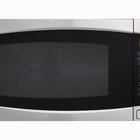
How to Convert Stovetop Recipes to ...
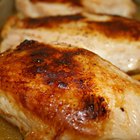
How to Make Pollo Asado-Marinated ...

The Positive Effects of Using a ...
How to Cook in a Gas Stove or Oven
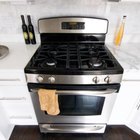
Bagel Bites Heating Instructions
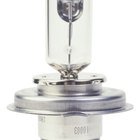
How to Cook With a Halogen Oven
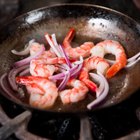
How to Cook Shrimp in a Skillet

How to Cook Eggs in Cupcake Pans
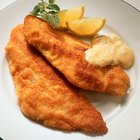
How to Fry Fish That Was Frozen

Glass Pie Pan Baking Tips

Recipes for Enameled Cast Iron Cookery
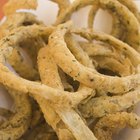
How to Deep Fry Vegetables With Batters

How to Make Pan-Seared Baked Steak
How to Bake Pork Loin Pieces
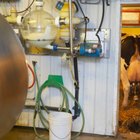
How to Cook With Almond Milk

How to Make a Roast in an Electric Fry ...

How to Cook in an Electric Frying Pan
How to Use a Hob Steamer
References
Tips
- Using a baking rack keeps the food on the bottom of the pan from burning as it bakes.
- Many electric skillets are nonstick so you do not need to add much oil when frying.
- Use a spatula made of silicone or heat-proof plastic to avoid scratching the nonstick surface of the skillet.
Writer Bio
Based in Pennsylvania, Emily Weller has been writing professionally since 2007, when she began writing theater reviews Off-Off Broadway productions. Since then, she has written for TheNest, ModernMom and Rhode Island Home and Design magazine, among others. Weller attended CUNY/Brooklyn college and Temple University.